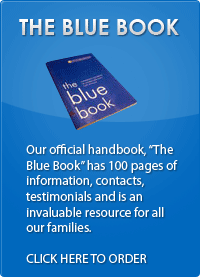Feeding
Text supplied by Maeve Morrision, Speech Language Therapist, South Auckland Health and Marilyn Heine, Speech Language Therapist, Hutt Hospital.
Feeding your baby need not be a problem and can be just as satisfying and rewarding as with any infant. It should provide nourishment and be a pleasurable experience for both parent and baby.
Cleft Lip only
If your baby has a cleft lip your baby should not have many problems feeding and many manage to breastfeed successfully. If breastfeeding, it may help to have the baby positioned so that the cleft is on the side nearest the mother. The breast and possibly a finger can help to make a seal so the baby can get good suction. If the baby does not manage to suck from the breast a standard bottle or special bottle may be needed.
Cleft Palate or Cleft Lip and Palate
A baby with a cleft palate, or a cleft lip and palate may experience more problems feeding because to suck adequately, an infant needs to push the tongue and nipple or teat up against the roof of the mouth. At the same time the soft palate lifts in order to close off the nose to create suction. With a cleft it may be impossible to get suction, as the surface where the baby is pressing the nipple or teat against may not be intact. It may be helpful to position the teat or nipple to the opposite side from the cleft.
The baby with a cleft is also more likely to have milk coming down the nose while feeding and may also swallow more air than usual so will have to be burped more frequently.
Special Feeding Bottle
A squeeze bottle and a special teat may be necessary to overcome these difficulties And you can discuss the best options for your baby with your Lactation Consultant and Speech-Language Therapist. Feeding should be relaxed and the baby should be positioned semi-reclined as being more upright helps reduce nasal regurgitation and choking. It may take a little extra time at first but generally 30 to 40 minutes should be adequate for each feed.
Tube Feeding
Some infants can have more severe difficulties feeding and may need to be fed by a tube going down into the baby’s stomach. This is often a temporary measure and the baby will usually go on to learn to feed normally.
Breast Feeding
Breast milk is the ideal food for infants so breastfeeding is encouraged, although it is not easy and in many cases is not possible. Breastmilk can be expressed and given from a bottle or stored for later use. Remember your lactation consultant can provide assistance if you need help with breastfeeding, or expressing milk, otherwise the alternative is to use infant formula.
Weaning
This should occur at the same time and is the same sequence as other infants at around 4 to 6 months. Although you may find it takes a little longer to establish. Problems experienced with solids include nasal regurgitation (food coming out the nose via the cleft), choking and coughing and refusing food in the mouth. If the infant is born prematurely this age refers to the corrected age.
Most babies will grow at the expected rate however it is recommended your baby is weighed every 4 to 6 weeks to monitor gorwth at least until the time of surgery. It is important for your child to be well nourished beofre surgery to help with the extra stresses in the period after surgery.
Feeding following surgery
Cleft centres follow slightly different protocols on feeding immediately following surgery. Some surgeons may require that your child be fed using a non-sucking method of feeding to prevent stress on the newly repaired palate or lip. If your surgeon has requested a non-suck method of feeding, there are several options available, and it is considered important that the baby is familiar and practiced at this non-sucking method of feeding before surgery. All centres suggest a vitamised or liquid diet for 2-4 weeks following surgery.
It is usual for the baby to have to avoide sucking for up to 4 weeks after surgery depending on your surgeons requirements. During this time the post-surgical feeding options are:
- Drinking from an open cup or a specially shaped flexicup. This is a pliable cup which can be squeezed to help the child learn to drink
- Feeding from a softcup. This is a plastic bottle with soft spoonlike edge. The milk can be squeezed in a controlled way and the baby learns to lap instead of sucking.
- Feeding from a Rosti Bottle. This has a plastic lip, which allows liimk to be trickled into the baby’s mouth.
If your surgeon does not require a non-suck methold of feeding after surgery, your baby will be allowed to take breast milk or formula through your usual feeding method.


